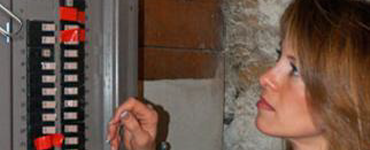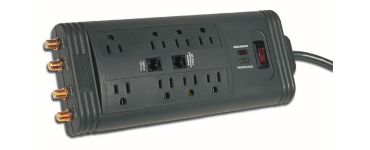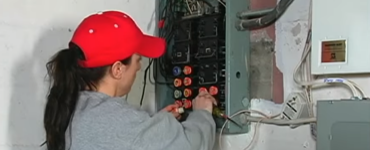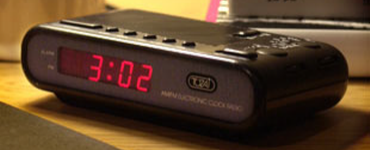Power surges cause & effect
Surges can range from five or ten volts when you turn on your hair dryer to thousands of volts if lightning strikes a transformer.
Internal power surges
More than half of household power surges are internal. These happen dozens of times of day, usually when devices with motors start up or shut off, diverting electricity to and from other appliances.Refrigerators and air conditioners are the biggest culprits, but smaller devices like hair dryers and power tools can also cause problems.
External power surges
An external power surge, stemming from outside your home, is most commonly caused by a tree limb touching a power line, lightning striking utility equipment or a small animal getting into a transformer.Surges can also occur when the power comes back on after an outage, and can even come into your home through telephone and cable TV lines.
Why worry about power surges?
Your home is filled with items susceptible to power surges. Anything containing a microprocessor is especially vulnerable - the tiny digital components are so sensitive that even a 10-volt fluctuation can disrupt proper functioning.Microprocessors are found in hundreds of consumer items, including TVs, cordless phones, computers, microwaves, and even seemingly "low-tech" large appliances like dishwashers, washing machines and refrigerators.
Large power surges, as with a lightning strike, can cause instantaneous damage, "frying" circuits and melting plastic and metal parts. Fortunately, these types of power surges are rare.
Low-level power surges won't melt parts or blow fuses, but they can cause "electronic rust," gradually degrading internal circuitry until it ultimately fails.
Small surges won't leave any outward evidence, so you may not even be aware they're happening - even though they may occur dozens or even hundreds of times each day.
Preventing power surges
The first line of defense against power surges is prevention. While most external surges can't be controlled, you can eliminate some common causes of internal surges.
Unplug devices you aren't using
The easiest way to avoid power surge problems is to unplug devices that aren't being used. Take a look around your home, and you'll likely find dozens of idle items plugged in.
There's no need to leave toasters, power tools or other small appliances plugged in; if you rarely use the programming features on your microwave or VCR, unplug those as well.
Upgrade inadequate wiring
If you have an older home, inadequate wiring could be the cause. Electrical systems in homes built before the 1980s weren't designed to handle large-capacity refrigerators, entertainment systems and computer equipment.
Some visible signs of inadequate wiring are frequent blown fuses or tripped circuit breakers, or lights that flicker or dim when the refrigerator or another large appliance kicks on.
Don't ignore these symptoms - they're a signal that something is wrong, and the problem may become a fire hazard.
Fix overloaded circuits
If your home is newer, you may have a problem with an overloaded circuit. Look for two (or more) large appliances drawing power from the same circuit, especially in the kitchen.
Another trouble spot might be a circuit with many smaller devices, such as a family room filled with computer and entertainment equipment.
Ask your electrician to establish dedicated circuits for each large appliance, and to divide rooms with multiple devices into separate circuits.
More from this category
Surge protectors
Not all power strips protect against surges. Know what to look for to get your money's worth.
Power quality 101
Updating electrical wiring
Yesterday's wiring seldom meets today's electrical needs. Learn what it takes to install modern wiring in an older home.





